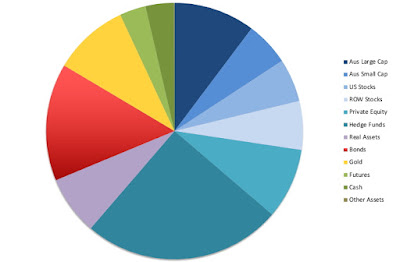HEDGE FUNDS SURGE IN FEBRUARY AS
INTEREST RATES RISE
HFRI Equity Hedge leads broad-based gains as retail trading trend expands;
Macro, CTA strategies advance on rates, commodities;
Crypto, Activist, Technology, Energy sub-strategies also lead
CHICAGO, (March 5, 2021) – Hedge funds surged in February to extend
January gains as interest rates, commodity prices, and expectations for
the reemergence of inflation all increased. The HFRI Fund Weighted
Composite Index® (FWC) gained +4.1 percent in February, while the
investable HFRI 500 Fund Weighted Composite Index advanced +3.2 percent,
according to data released today by HFR®, the established global leader
in the indexation, analysis and research of the global hedge fund
industry.
Consistent with the previous month, the HFRI FWC experienced a wide
dispersion in constituent performance, as the top decile of the HFRI
gained +16.3 percent, while the bottom decile declined -3.1 percent for
the month. As reported previously by HFR, total hedge fund capital
jumped to $3.6 trillion to begin 2021, a 4Q20 increase of $290 billion,
representing the largest quarterly asset growth in industry history.
Estimated 4Q20 net asset inflows totaled $3.0 billion, bringing total
inflows for the second half of 2020 to an estimated $16.0 billion.
Equity Hedge strategies, which invest long and short across specialized
sub-strategies, led February performance as the influence of retail
investors increased trading volumes and investors expanded their focus
to a wider range of individual equities. The HFRI Equity Hedge (Total)
Index surged +4.8 percent for the month, with strong contributions from a
wide dispersion of sub-strategy performance led by the high-beta,
long-biased Energy, Fundamental Value, and Technology exposures.
Following strong January gains, the HFRI EH: Energy/Basic Materials
Index surged +9.7 percent in February, while the HFRI EH: Fundamental
Value Index spiked +6.4 percent and the HFRI EH: Sector-Technology Index
added +4.4 percent.
Event-Driven strategies, which often focus on out of favor, deep value
equity strategies and situations, accelerated January gains into
February, with the investable HFRI 500 Event-Driven Index surging +2.8
percent for the month, while the HFRI Event-Driven (Total) Index gained
+3.6 percent. ED sub-strategy gains were led by Activist, Special
Situations, and Credit Arbitrage exposures, strategies which
categorically trade in deep value equity situations, including companies
which are possible targets for restructuring, acquisitions or
investor-driven strategy shifts. The HFRI ED: Activist Index surged +8.3
percent in February, while the HFRI ED: Special Situations Index
advanced +4.1 percent, and the HFRI ED: Credit Arbitrage Index added
+2.7 percent.
Uncorrelated Macro strategies also posted a strong gain in February,
driven by trend-following CTAs and fundamental Commodity-focused
strategies. The HFRI Macro (Total) Index jumped +3.6 percent, while the
investable HFRI 500 Macro Index spiked +3.7 percent. Driven by strong
trends in interest rates, Macro sub-strategy performance was led by the
HFRI Macro: Systematic Diversified/CTA Index, which gained +4.4 percent
for the month, and the HFRI Macro: Commodity Index, which added +4.1
percent.
The fixed income-based, interest rate-sensitive HFRI Relative Value
(Total) Index gained +2.3 percent in February, while the HFRI 500
Relative Value Index advanced +1.5 percent for the month, led by the
investable HFRI 500 RV: Volatility Index, which jumped +3.0 percent, and
the HFRI 500 RV: Fixed Income-Convertible Arbitrage Index, which
advanced +2.4 percent.
Extending the January surge, Blockchain and Cryptocurrency exposures
continued to deliver strong performance as cryptocurrencies reached
record highs and as hedge funds increasingly incorporated related
exposures into new and existing fund strategies. The HFR Blockchain
Composite Index and HFR Cryptocurrency Index each surged nearly +30.0
percent in February.
Risk Premia and Liquid Alternatives also gained in February, led by
multi-asset and commodity exposures. The HFR Bank Systematic Risk Premia
Multi-Asset Index advanced +7.9 percent for the month, while the HFR
BSRP Commodity Index gained +3.3 percent. The HFRI-I Liquid Alternative
UCITS Index advanced +1.05 percent in February, driven by a +1.8 percent
gain in the HFRI-I UCITS Event Driven Index.
"Recent hedge fund gains accelerated through February, marking the
strongest 4-month period in over 20 years as the drivers of performance
widened to include not only Event Driven and Equity Hedge, but also
captured strong positive contributions from trend-following Macro and
interest rate-sensitive Relative Value Arbitrage strategies", stated
Kenneth J. Heinz, President of HFR. "New stimulus measures, increasing
vaccinations, and uncertainty with regards to immigration and energy
policy have shifted macroeconomic and geopolitical volatility to include
not only the single stock or asset trends from concentrated, increased
retail trading but also cryptocurrency trading, energy exposure and
interest rate/inflation sensitivity. Institutional investors are likely
to continue expanding allocations to leading hedge fund managers as a
mechanism to gain specialized exposure to these and other powerful
trends through mid-2021".










































